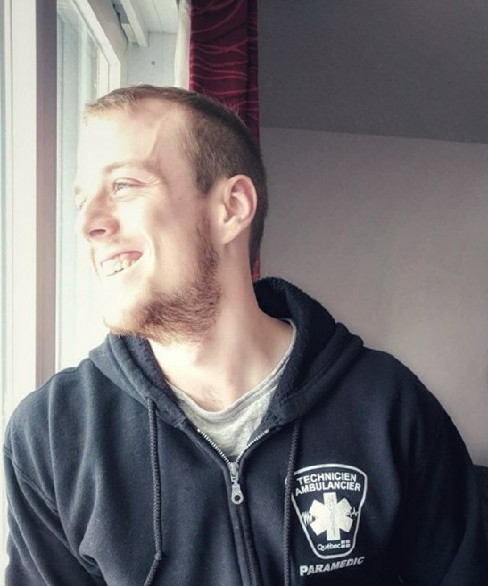Basic ACLS medication Summary
Basic ACLS medication summary
ACLS MEDICATION SUMMARY
ADENOSINE Slows conduction through the AV node
(Antiarrhythmic) Interrupts AV nodal reentry pathways
Dosage: 6mg rapid bolus followed by 20 mg Saline flush
12 mg may be given twice if no response in 1-2 min
Onset: Immediate, Duration: 10 seconds
AMIODARONE IV Amiodarone slows intraventricular conduction
(Antiarrhythmic) Beta blockade causes slowing of the heart rate & vasodilation
Prolongs refractory period in all cardiac tissue
Arrest: 300 mg IV push; repeat 150 mg after 3-5 minutes x 2
V-Tach: 150 mg IV over 10 minutes; repeat q 10 minutes
Maximum: 2.2 g IV in 24 hours
ASPIRIN Blocks formation of clots and prevents arterial constriction
(Antiplatelet) Dosage: 160 – 325 mg P.O. Most effective if chewed
ATROPINE Restores normal AV conduction in low degree AV blocks and bradycardias
(Parasympatholytic) Bradycardia: 0.5 mg q 3-5 min. Max: 3 mg
Onset: Rapid, Duration: 2 - 6 hours
DILTIAZEM Produces direct potent negative chronotropic effects & mild negative
(Calcium channel inotropic actions
blocker) It slows conduction and prolongs refractoriness in the AV node.
It has minimal effects on the bypass tracts (bundle of Kent).
Never to be given in cases of V-Tach
PSVT: 20 mg over 2 min., After 15 min 25 mg
For A-Fib/flutter: Follow the bolus with 5 -15 mg/hr titrated to heart rate
Onset: 2 - 5 Minutes, Duration: 1 - 3 hours
Calcium channel blocker & Beta blockers together are contraindicated
because their effects are synergistic
DOPAMINE Stimulates dopaminergic, beta, and alpha receptors
(Catecholamine) Is indicated for hemodynamically significant hypotension in the absence
of hypovolemia
Dopaminergic effects: 2 - 5 mcg/kg/min
Beta & Alpha effects: 5-10 mcg/kg/min
Alpha & Beta effects: 10-20 mcg/kg/min
EPINEPHRINE A natural catecholamine with both A & B adrenergic activity
(Catecholamine) It makes V-fib more susceptible to defibrillation
It improves circulation during CPR
Bolus: 1 mg 3-5 min during pulselessness (can be given by infusion)
Drip: 2-10 mcg/min IV drip (for bradycardias)
Onset: 1 - 2 minutes, Duration: 5 - 10 minutes
ISOPROTERENOL Beta agonist used for symptomatic bradycardia when pacemaker is not
(Catecholamine) available and for transplanted heart. Also, used for refractory torsade de pointes
Bradycardia: Infuse 2-10 mcg/min; titrate to heart rate
Torsade: Titrate to increase rate until VT is suppressed
LIDOCAINE Suppresses ventricular arrhythmias by decreasing automaticity
(Antiarrhythmic) Prolongs conduction and refractoriness in ischemic tissue
Increases the fibrillation & decreases the defibrillation threshold
Does not affect myocardial contractility, B/P, or atrial rate.
Cardiac arrest: 1.0 - 1.5 mg/kg IV bolus; ½ dose repeated q 3-5 min;
Non-arrest: 1.0-1.5 mg/kg followed by IV drip of 1-4 mg/min. Second
bolus of 0.5 - 0.75 mg/kg q 5 - 10 min.
Max: of 3 mg/kg Bolus
The maintenance doses should be reduced by 50% in pt over 70 years old
or with liver dysfunction
METOPROLOL Beta blocking effects used in all MI’s and unstable angina’s
(Beta-Blocker) Second line for SVT’s; can be used to slow rate and lower B/P
Dosage: 5 mg slow IV q 5 minutes for a total of 15 mg
Onset: 1 - 2 minutes, Duration: 3 - 4 hours
MIDAZOLAM It is a short acting Benzodiazepine which has CNS depressant effect
(Benzodiazepine) Indicated for sedation prior to cardioversion
Anesthesia occurs 2-3 min after injection
Dosage: 1-2 mg as needed
Onset: 1 - 3 minutes, Duration: 2 - 6 hours (dose dependent)
MORPHINE It reduces systemic vascular resistance, lowers myocardial oxygen demands, and
(Narcotic) relieves pain.
Treatment of choice for pain and cardiogenic pulmonary edema.
Dosage: 2-4 mg q 5 minutes slow IV until desired effect
Onset: 1 - 2 minutes, Duration: 2 - 7 hours
NARCAN Temporarily reverses the effects of narcotics
(Opioid antagonist) Dosage: 0.4-2.0 mg IV q 2 minutes
Onset: 2 minutes, Duration: 30 – 60 minutes
NOREPINEPHRINE It increases blood pressure by vasoconstriction
(Catecholamine) It increases myocardial oxygen demands
Indicated for hypotension caused by decreased vascular resistance
Dosage: Start with 0.5-1.0 mcg/min through a central line; ↑ 30 mcg/min
SODIUM It is the most widely used buffer agent
BICARBONATE Indicated for confirmed acidosis, hyperkalemia, or tricyclic or
(Electrolyte) phenobarbital overdose
Indicated when other recommended ACLS efforts have failed
Dosage: 1 mEq/kg IV bolus, repeat 0.5 mEq/kg q 10 min
Onset: 2 - 10 minutes, Duration: 30 - 60 minutes
VASOPRESSIN Naturally occurring antidiuretic hormone
(Antidiuretic Can replace epinephrine in algorithm for V-Fib only (class IIB)
Hormone) Causes vasoconstriction which improves CPR
Dosage: 40 units IV or IO (One dose only)
VERAPAMIL Exerts potent negative chronotropic and negative inotropic effects
(Calcium channel Slows conduction and prolongs refractory period in AV node
Blocker) Recommended for PSVTs in stable patients
Not recommended in cases of WPW
Dosage: 2.5 – 5.0 mg slow IV bolus, repeat 5 - 10 mg in 15-30 min Max: 20 mg
Onset: 2 - 5 minutes, Duration: 30 - 60 minutes
Should be avoided in wide complex tachycardia
CALCIUM 10% Increases the force of myocardial contractions
(Electrolyte) Indicated for Hyperkalemia (>7 meq/l), hypocalcemia, or CCB toxicity
Hyperkalemia & channel blocker: 8-16 mg/kg slow IV (5-10 ml)
Prophylaxis: 2-4 mg/kg slow IV q 10 min (2 ml)
NITROGLYCERIN It dilates large coronary arteries, antagonizes vasospasms, and increases
(Nitrate) coronary collateral blood flow
Can be fatal for patients taking Viagra, Cialis, Levitra, Revatio or Staxyn
Dosage: 1 tablet or spray q 5 min
Dosage for IV NTG: Indicated for unstable angina, MI, and congestive heart failure.
Bolus of 12.5-25 mcg IV. Drip 10-20 mcg/min
PROCAINAMIDE It suppresses ventricular ectopy and slows intraventricular conduction
(Antiarrhythmic) It is indicated for wide variety of arrhythmias
Dosage: 20 mg/min for 5 min to max of 17 mg/kg followed by drip 1-4 mg/min
Dosage for recurrent VF/VT: 50 mg/min IV is acceptable



